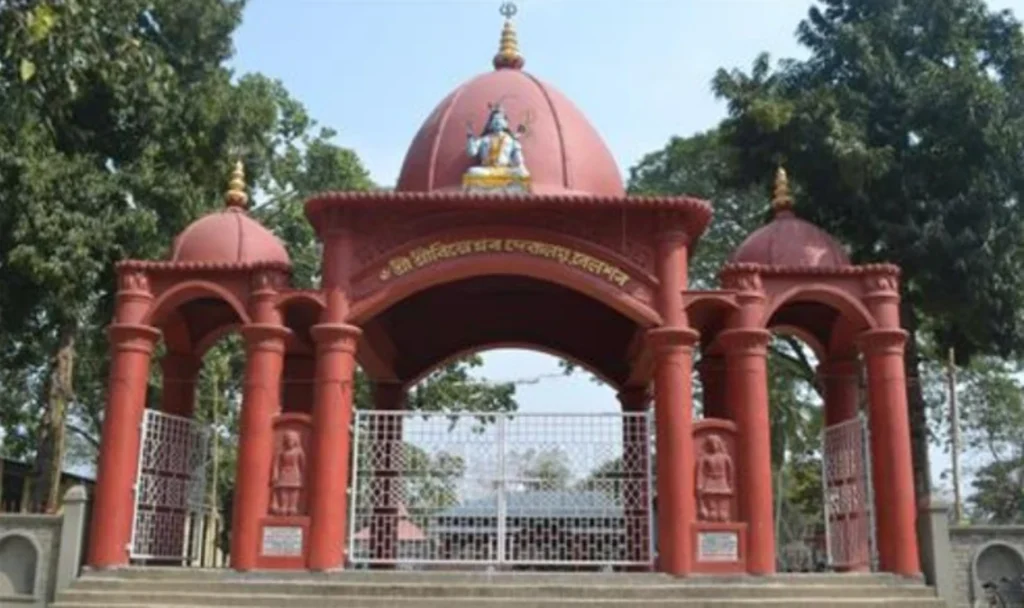“Explore Nalbari District, a blend of Assam’s vibrant culture and scenic beauty. Discover ancient temples, serene landscapes, and warm traditions.”

Nalbari District: A Glimpse into Assam’s Heartland
Nestled in the heart of Assam, Nalbari District is a place where tradition meets modernity, and natural beauty harmonizes with cultural diversity. Covering an area of approximately 1,009 square kilometers, this district is a vibrant tapestry of history, culture, and scenic landscapes.
Geography and Landscape
Nalbari District boasts a diverse topography. To the north lies the picturesque Himalayan foothills, while the southern region is dominated by the fertile Brahmaputra plains. The district is crisscrossed by numerous rivers and rivulets, including the Buradia, Pagladiya, and Pohumara, making it agriculturally rich. The serene natural beauty of this area is a testament to Assam’s incredible biodiversity.
Cultural Heritage
The district is a melting pot of different cultures and traditions. It is predominantly inhabited by Assamese-speaking communities, with Bodo, Bengali, and other ethnic groups adding to the cultural mosaic. Nalbari is known for its diverse festivals and celebrations. Bihu, the Assamese New Year, is celebrated with great pomp and show, as are Durga Puja, Diwali, and Christmas. The vibrant colors, melodious tunes, and sumptuous feasts during these festivals reflect the rich cultural tapestry of the district.
Historical Significance
Nalbari has a significant historical heritage. It was once a part of the ancient Koch kingdom and later came under the rule of the Ahom dynasty. The district witnessed various political and social movements during the Indian independence struggle. Sites like Kharupetia Satra, dedicated to the worship of Lord Krishna, and Nalbari Rajbari, a former royal palace, are historical gems that offer a glimpse into the district’s past.
Agriculture and Economy
Agriculture is the backbone of Nalbari’s economy. The fertile plains along the Brahmaputra River support the cultivation of rice, jute, tea, and various fruits and vegetables. The district is also known for its dairy farming, with several cooperative milk societies. In recent years, there has been a growing emphasis on organic farming and sustainable agricultural practices, reflecting a commitment to preserving the environment.
Education and Infrastructure
Nalbari District places a strong emphasis on education. It is home to several schools, colleges, and educational institutions, including the Nalbari College and Nalbari Law College. The district has made strides in improving its infrastructure, with better road connectivity, healthcare facilities, and access to clean drinking water.
Tourist Attractions
Nalbari District offers a range of tourist attractions for nature enthusiasts and history buffs alike. The Buradia Picnic Spot, situated on the banks of the Buradia River, is a popular destination for picnics and outdoor activities. The Tamreswari Temple, dedicated to the goddess Tamreswari, is a place of religious significance and architectural beauty. Nature lovers can explore the rich biodiversity of the district at the Nalbari Bird Sanctuary, which is home to various migratory and resident bird species.
Famous Places in Nalbari District
Nalbarri District in Assam is home to several famous places that offer a blend of cultural, historical, and natural attractions. Here are some of the notable places to visit:
Tamreswari Temple: This ancient temple is dedicated to the goddess Tamreswari and is known for its exquisite architecture and religious significance. It attracts devotees and tourists alike.
Buradia Picnic Spot: Situated on the banks of the Buradia River, this spot is a popular destination for picnics and outdoor activities. The serene natural surroundings make it a perfect place to relax and unwind.
Nalbari Bird Sanctuary: Nature enthusiasts will appreciate this sanctuary, which is home to a variety of migratory and resident bird species. It’s a paradise for birdwatchers and photographers.
Nalbarri Rajbari: This historical site was once a royal palace and offers a glimpse into the district’s regal past. The architecture and design of the palace are noteworthy.
Kharupetia Satra: A religious center dedicated to Lord Krishna, this Satra is a serene place for meditation and spirituality. The tranquil atmosphere and intricate artwork make it a must-visit.
Kamakhya Temple: While technically located just outside Nalbari District, the Kamakhya Temple in nearby Guwahati is a significant pilgrimage site for devotees of the goddess Kamakhya. It’s known for its unique architecture and religious importance.
Bongaigaon Refinery: Although not a tourist attraction in the traditional sense, the Bongaigaon Refinery plays a vital role in the region’s economy. Visitors interested in industrial processes and energy production may find the refinery tour informative.
These famous places in Nalbari District offer a diverse range of experiences, from spirituality and history to nature and relaxation. Whether you’re a history buff, a nature lover, or a religious pilgrim, Nalbarri has something to offer for every traveler.
Read More :-
Nagaon District: Dive Into Assam’s Cultural and Natural Wonders